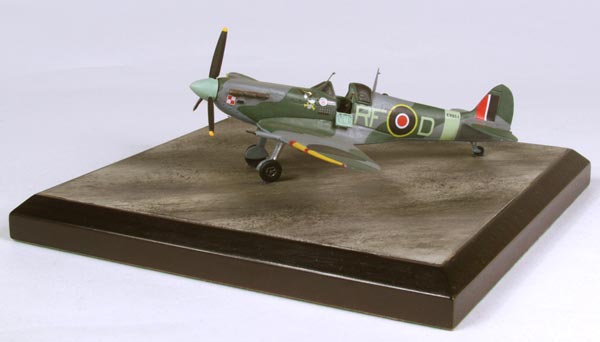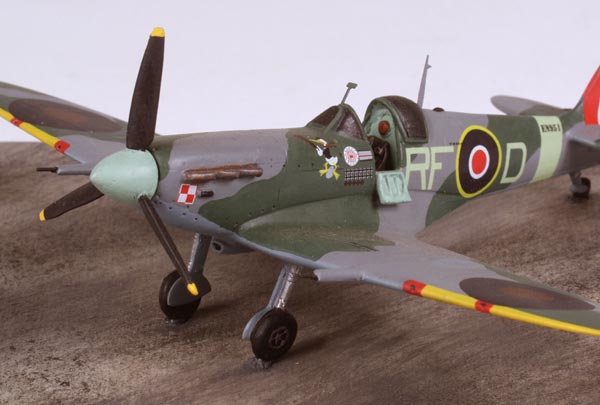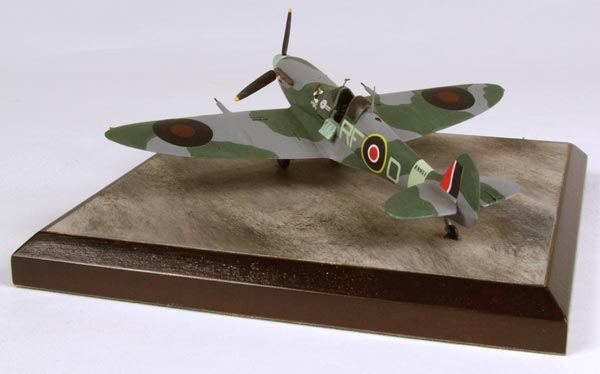Supermarine Spitfire Mk VB
Supermarine Spitfire Mk VB EN951 RF-D
303 Sqn, Sqn Ldr Jan Zumbach OC, Kirton-in-Lindsey, late 1942.
The Spitfire Mk VB was the major mark incorporating the lessons learned from the Battle of Britain, and was the first mark to take the offensive across the English Channel. Spitfire Mk VB EN951 was built at Castle Bromwich and first issued in the summer of to No. 133 ‘Eagle’ squadron,- the pilots of which were volunteers from the USA. Its early pilot was Don Blakeslee, who claimed several victories in Operation Jubilee, the attack on Dieppe on 19 August 1942; Blakeslee subsequently to the USAAF’s 8th Air Force, becoming a supporter of the Mustang and CO of the 4th Fighter Group. The Spitfire was transferred to No.303 Squadron RAF at Kirton-in-Lindsay in September where it was allocated to its CO, Sqn.Ldr. Jan Zumbach, in whose markings it is show. 303 was one of several RAF squadrons comprised of Polish exiles, and wears the Polish red-and-white checks on its nose as well as the ‘Donald Duck’ which came from Zumbach’s nickname. The red and white badge below the windscreen is that of 111 “Kosciuszko” Squadron of the Polish Air Force, whose PZL.ll fighters had been victims of the German invasion in September, and whose emblem like those of other Polish units was carried through the war by appropriately-manned RAF squadrons.
The VB was the first mark of Spitfire to routinely carry two 20mm. cannon, supplemented by four Browning .303in. machine guns. The green and brown camouflage on the upper surfaces that was intended to conceal the aircraft against the English landscape was replace by green and grey, largely to give better over-water protection, another indication of the changing role of Fighter Command in the third year of the war. The ‘sky’ (pale green) band around the rear fuselage was intended to give instant identification of an RAF fighter in the heat of battle, and the yellow strips along the leading edge had the same function in a ‘head-on’ situation. Zumbach’s ‘scoreboard’ recorded 13 kills, four ‘probables’ and one damaged. He finished the war as the Wing Leader of 133 Wing, and in the ‘sixties organised the Katangese Air Force, and later on also served in the Biafra conflict.

Scale 1:72 Wingspan 6.25″ (156 mm)
Base size 6.37″ (162 mm) square (No. 4)
Weight not including base 6.75 ozs (189 grams)
Total number of models produced 84




